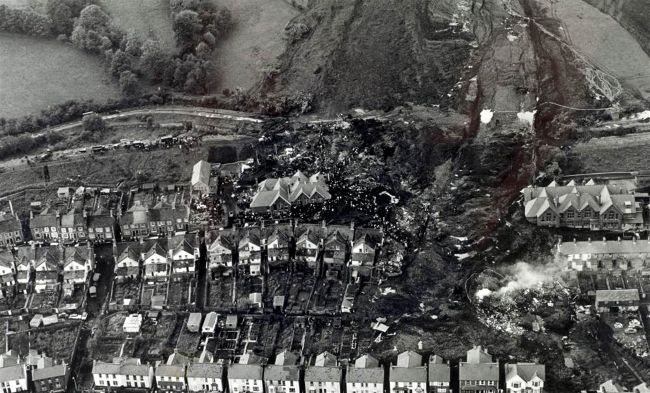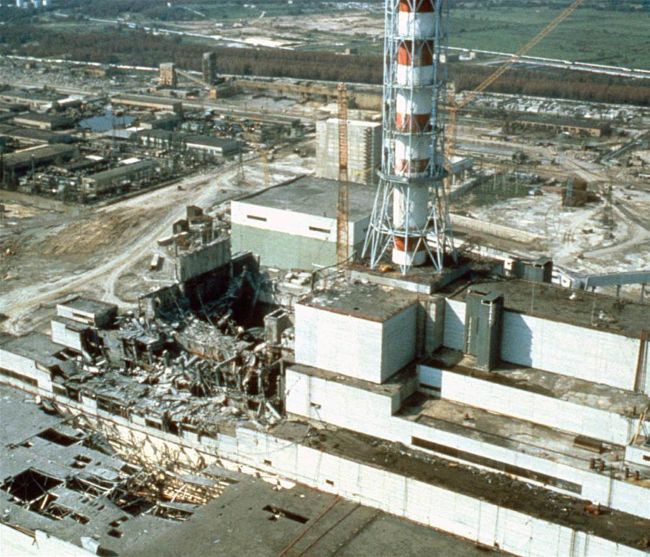DISASTER CLEANUP
From nuclear explosions to oil spills, we explain how some of the most harmful human-made catastrophes in history happened
WORDS MIKE JENNINGS
DID YOU KNOW?
The spoil tip that collapsed in Aberfan contained 227,000 cubic metres of material and was 34 metres tall

Huge numbers of locals and visitors joined Aberfan’s rescue mission

Aberfan’s mining disaster destroyed a school, houses and a rail line
Britain’s worst mining disaster
Big disasters don’t often happen in the UK, and that made the Aberfan colliery slip even more shocking. The Welsh village of Aberfan grew up around a nearby coal mine, which was established back in 1869. By 1966 the settlement had grown, hosting a population of around 5,000, and the village was surrounded by seven huge spoil piles – waste material from mining. That’s not necessarily a problem, but in October 1966 the village was hit by more than 17 centimetres of rainfall, and that caused the you know? seventh spoil pile to subside. At 09:15 on 21 October 1966, a vast quantity of saturated debris broke free from the pile and travelled towards the village at speeds between 11 and 21 miles per hour and in waves up to nine metres high.
The result was devastating: the ensuing avalanche of fast-moving material demolished a primary school and damaged a nearby secondary school, as well as 18 nearby houses. The village was engulfed by tonnes of dusty and stony black coal mining waste. Thousands of volunteers travelled to Aberfan to aid rescue efforts, and the prime minister and queen both visited in the days following the incident. The Aberfan disaster remains one of the UK’s worst mining incidents.
Did you know?
The fourth spoil pile slid in 1944, but didn’t reach the village
Before
After

The vast explosion at Chernobyl pumped nuclear material into the atmosphere
A nuclear experiment with explosive results
The explosion at Chernobyl Nuclear Power Plant in what was then Soviet Russia is one of the world’s most infamous human-made disasters – and with good reason. It started innocently enough, with engineers performing a routine experiment to find out if the plant’s emergency water cooling would still work during a power outage. The test had been carried out previously, but on this occasion there was a power surge and engineers couldn’t shut down Chernobyl’s nuclear reactors. Steam built up in one reactor, the roof was blown off, the nuclear core was exposed and radioactive material was released into the atmosphere. Many workers and firefighters were hospitalised and 28 people passed away from acute radiation exposure. It took nearly two weeks and military intervention to extinguish the fires. Crucially, it took more than a day for the 50,000 residents of nearby Pripyat to be evacuated. Following this, the government established a 19-mile ‘exclusion zone‘ and built a containment dome over the top of the site. In the years following the incident, studies estimate that thousands of people have developed cancer because of the radiation. It’s one of the most expensive disasters in history, too, and it’s estimated that containment and clean-up efforts will continue until 2065.